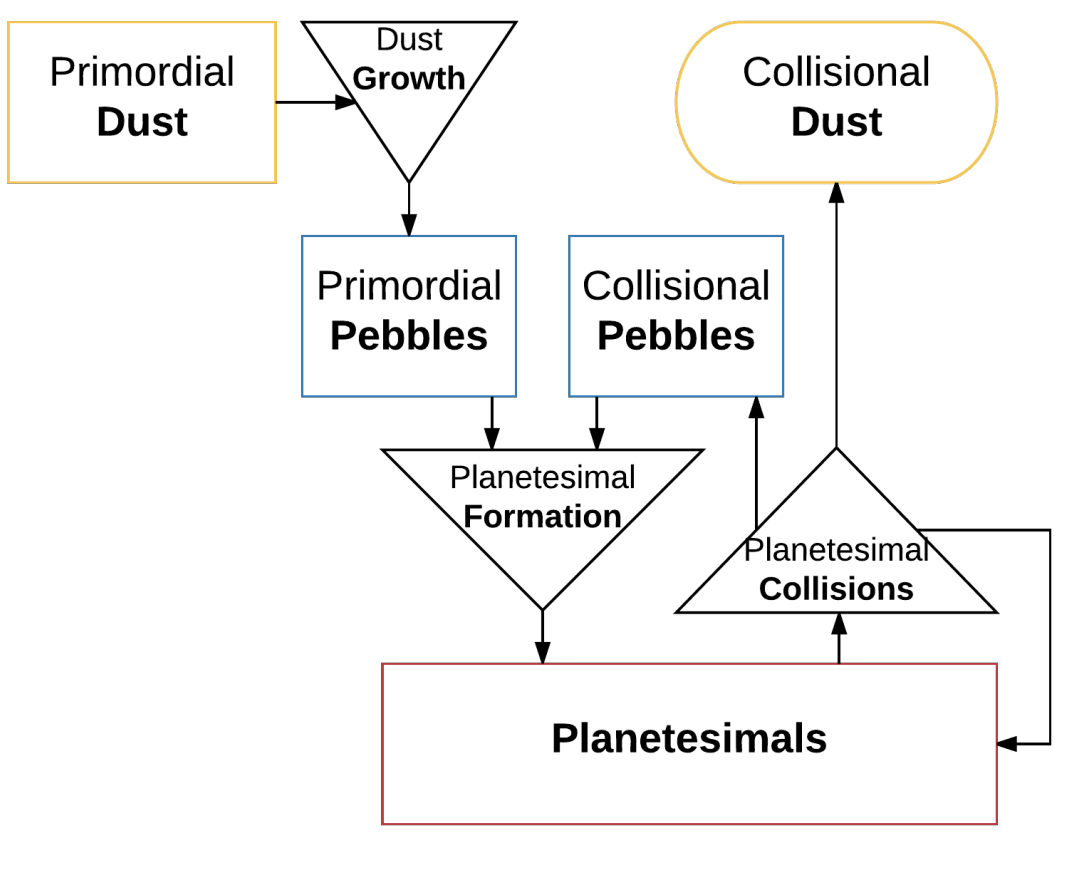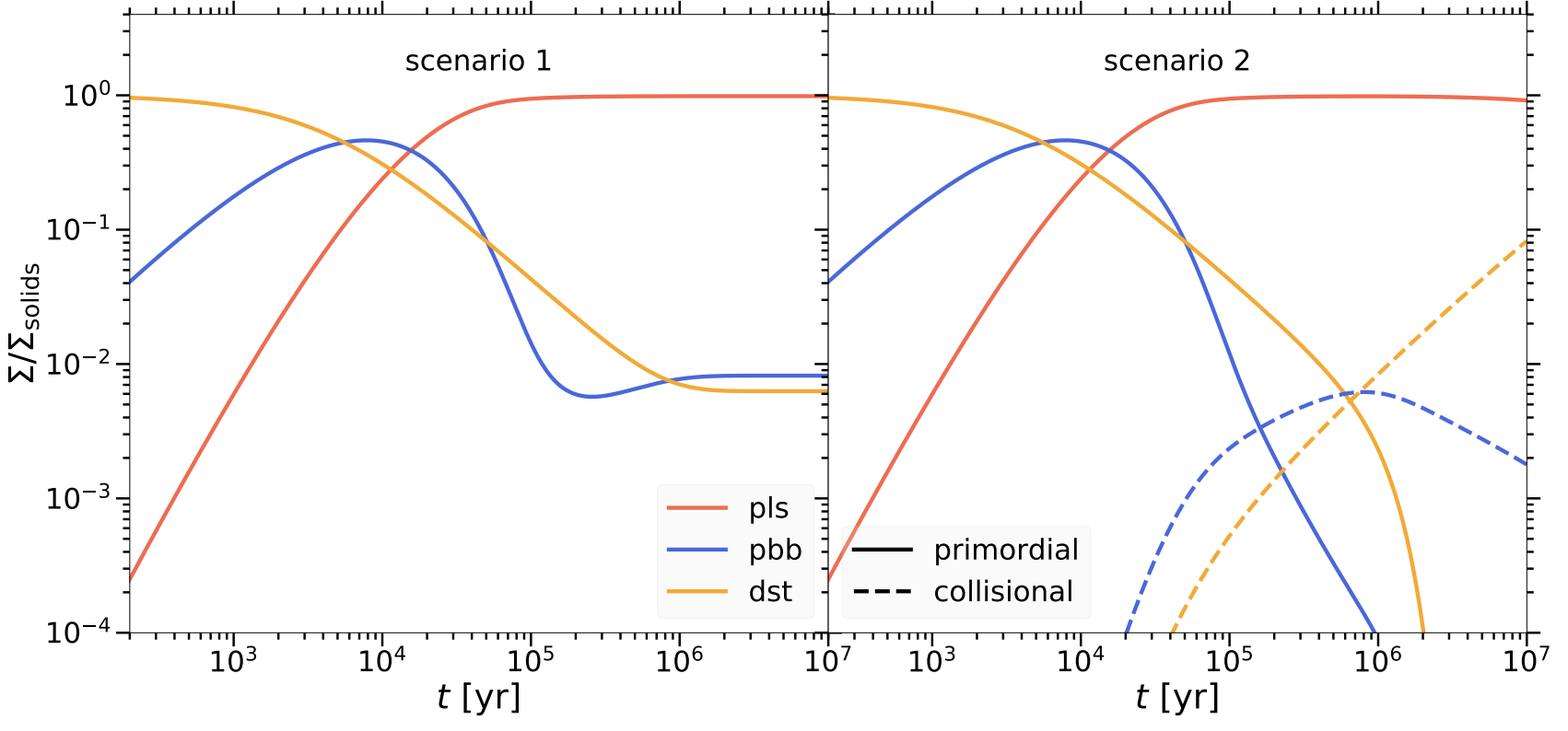The formation of planetesimals shifts mass from small-sized grains to the much larger, unobservable planetesimals, as the supply of dusty material in the protoplanetary disk shrinks.
However, collisions between planetesimals, provided they are both frequent enough and sufficiently destructive, may replenish small-sized materials leading to a non-trivial evolution of how solid mass is distributed amongst different sizes throughout the protoplanetary disk’s lifetime. In this project, we investigate this question using a toy model, which I coded in Python.
The simplifications performed in our model allow us to synthesize a large number of disks, which we then compare to observed populations of protoplanetary disks in e.g., the Ophiuchus or Lupus star forming regions.
Remarkably, our model may provide an explanation for the observation that the mass in mm-dust grains increases between Type I and Type II disks.
Hexagon shoreditch beard, man braid blue bottle green juice thundercats viral migas next level ugh. Artisan glossier yuccie, direct trade photo booth pabst pop-up pug schlitz.

